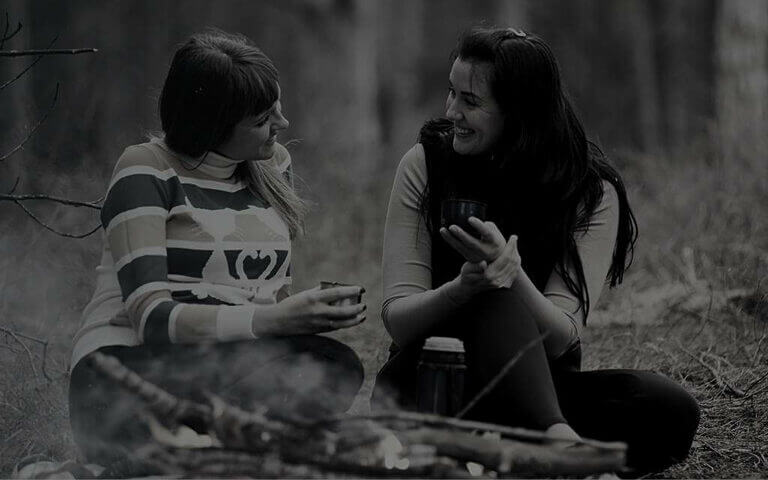I wish I knew what holding space meant years ago. I could have avoided caregiver burnout, emotional turmoil, numerous arguments with my wife, and the black cloud that followed me on a daily.
Holding space is largely untalked about, yet is so important for your emotional health and the ability to be with the emotions of another. Learning how to hold space will completely transform your relationship with yourself and others.
What does holding space mean?
This is the definition given by Carol Webster in her phenomenal book The Holding Space Practice
- Honour individual without judgement, first self, then family, then others
- Suspension of anxiety over expected outcomes
- Accepting “now” as it really is without undue regret or control
- Allowing self and others to choose as we avoid inappropriate pressure, collusion, manipulation, and/or exploitation
The way I like to explain it to people is:
Holding space is creating a safe, non-judgmental environment that allows yourself and/or others to be authentic, expressing thoughts and emotions without hesitation or worry.
Why is holding space so important?
Anyone who has ever been a caregiver to someone with cancer, or any other illness, knows that the emotions in the relationship between the caregiver and the person being cared for can reach a peak quite easily. It’s very easy to get lost in all the confusing emotions. It can also lead to a very damaged and/or confusing relationship with yourself and/or the other person.
I believe holding space with love is one of the greatest gifts you can offer another.
This is where being able to hold space becomes so, so important as a cancer caregiver. There will be numerous very intense moments throughout the journey. There will be feelings of despair, celebration, anger, confusion, sadness, frustration, and the list goes on.
Being able to hold space for yourself and others during these emotional times will transform your relationship with yourself and others. Holding space will allow the moment to be as it is without trying to change it or judge it. This frees you up to be as you truly are in that moment. This removes resistance to the moment and allows love to shine through!
How to hold space For Yourself and Someone Else
You have to learn to hold space for yourself first before you can hold space for anyone else.
This is where the work has to be done. I can tell you from experience, it will take some time to get to a point where you can hold space for yourself, most likely months.
I can also tell you from experience that being able to hold space for yourself AND the one you are caring for is extremely rewarding. A feeling accompanies it that I cannot compare to anything else.
Learn To Hold Space For Someone With 8 Simple Understandings:
- Being without doing
- Bravely seeing truth
- Feeling feelings without words
- Allowing without trying
- Gently noticing with curiosity
- Staying in the space without giving in to distraction
- A place where time and space are fluid
- Love is the end result, it IS the space
1. Being without doing
These days, if you don’t have a “To-Do List” that you can unravel to the floor, well my friend, you just aren’t “busy” enough. If you aren’t “doing” something then you are lazy. Most people are so concerned about their “To-Do List” that they completely neglect just “Being”. What do I mean by this?
When is the last time you allowed yourself just 5 minutes to not do anything GUILT FREE?
To experience yourself feeling truly alive in this life you live without any guilt that you aren’t “doing” something? Just allowing yourself to be authentic, as you are, at that moment? Meditation is a great way to re-learn how to do this. I say re-learn because there was a time in your life when you knew how to do this, most likely when you were a child and parental and societal conditioning have yet to cloud your judgment.
Being without doing is extremely important for caregivers to stay in touch with themselves and to not lose themselves, which is so easy to happen. What the person you are caring for needs is YOU. Having the “To-Do List” completed while you have lost yourself in the process leaves the one you are caring for feeling alone and feeling alone is a cancer patient’s worst fear. Help them overcome this fear by BEING there, by BEING YOU.
When it comes to “being without doing” while you are holding space for the one you are caring for, this simply means be authentic, present, there is nothing you need to do or say at that moment except be there for them.
2. Bravely seeing truth
First, you need to understand that your truths are only true to you, they are not absolute or universal. One shift in perspective and your truth becomes false. This is extremely important to keep in mind during those really tough emotional conversations with the one you are caring for. It is OK to express your opinion, just do it with an open mind, and in a non-forceful way, loving way.
Being able to bravely see truth starts with you. Any suppressed, or repressed, parts of yourself, or your dark side, that you haven’t been brave enough to accept as truth will need to be accepted with love as YOU. For example, many cancer caregivers, myself included, resent their role or the one they are caring for, at some point in their journey. Bravely seeing truth is recognizing the thoughts that are creating this feeling you have and facing it head-on as opposed to repressing it.
3. Feeling feelings without words
How do you know what you are feeling if you don’t label what you are feeling? What you are feeling is not the label you have been conditioned to give it, nor is it positive or negative, you only label it so.
How do you know you feel anything at all? Now that you are left without words, there is only one other way to know what you are feeling, and that is to feel it. Where in your body do you feel it? What does the energy feel like? What is the sensation? This is feeling feelings.
Caregiver burnout, compassion fatigue, anxiety, stress, and depression are all common symptoms of being a caregiver. Not doing these first three steps towards holding space is a major cause for this. Allow yourself to be without doing, notice your thoughts and see the truth, and fully experience the feelings generated by those thoughts by feeling them.
4. Allowing without trying
Trying to take control requires you to have made a judgment about what is. Most times this comes in the form of a “should”. Trying too hard is trying to control the outcome. Allowing is accepting things as they are at the present moment.
Allowing can easily be confused with being passive, as many people have been conditioned to believe that if they aren’t taking control then they are being passive. Allowing is being mindful and intentionally in the present moment. Understanding what you can and cannot control at that moment. This allows space to be created that will allow you to respond to what is instead of resisting what is by trying to take control.
As a caregiver, during tense conversations, this can be the difference between reacting with anger and responding with empathy.
5. Gently noticing with curiosity
If you want to learn how to do this, pay attention to how children respond to life’s experiences or think back to when you were a child. Remember how curious you were about everything.
Gently noticing with curiosity requires you to get out of your head and into the moment. This is the opposite of what most of us do as adults. We stay in our head and we take all of our assumptions as absolute truths and lose our desire for exploration in the process. If you suspended all of your assumptions and beliefs momentarily do you think that you might be a tad bit more curious?
For example, as a cancer caregiver, you may have strong opinions towards how certain things “should” be done. Instead of seeing your “shoulds” as absolute truths (which they aren’t), ask yourself: “Where did that thought come from? What led to me thinking that? Is it absolutely true? What else could be true?”
6. Staying in the space without giving in to distraction
It is human nature to get distracted by your very own thoughts. As soon as you start listening to, and believing the story you are creating in your head you are no longer holding space. You are no longer present in the moment or neutral in that space.
The key is to constantly be aware of what thoughts are going through your head and the feelings they are creating without giving in to them. Acknowledge them, don’t give them attention, it is when you give them the attention that you start getting caught up in your story and stop holding space.
Now, this may sound like a very difficult task to you, and I am not going to lie, it is very difficult to do. The reward for being able to do this is far greater than any frustrations you may go through while practicing staying in the space. The good news is you can practice not giving in to distraction at any time, for anyone, including yourself. You have plenty of time to practice, in fact, all you have is time.
Meditation is a great way to practice this. There is an amazing free app that you can download to your phone called Insight Timer with over 7000 guided meditations on it that is great for beginner and experienced meditators alike.
7. A place where time and space are fluid
Think back to a memory when you were so in the moment with what you doing, and who you were being that time completely escaped you. You were completely unaware of time and you were in the “zone”, this “zone” is your space and once you enter into this space, time and space become one.
This is the space where there are no words, thoughts, feelings, or judgments, there is just you. This is the space where you feel the safest and truest of who you are.
8. Love is the end result, it IS the space
You can only give what you have inside. Therefore, you must love yourself unconditionally first before you can do so for anyone else. You must love all that you are, including all of your sacred stories that you would not dare tell anyone. When you learn to hold space for yourself you learn unconditional love for yourself.
Once you have accepted yourself as is, loving yourself unconditionally, you may now do so for others. Now you are in a space where your own stories will not dilute the space you are attempting to hold for someone else.
Want more detail on how to practice holding space step by step?
I recommend this book: The Holding Space Practice
I recommend this workbook: The Holding Space Practice Workbook
I’d love to hear from you about your experiences on holding space!
Learn from all of your experiences, opportunities are everywhere.
Take care,






























